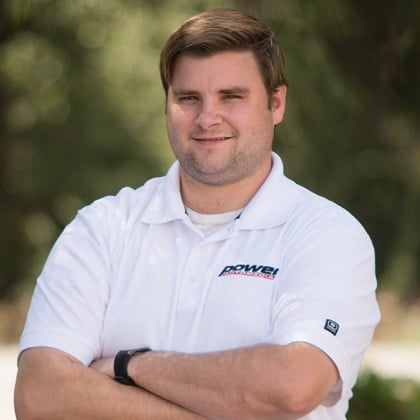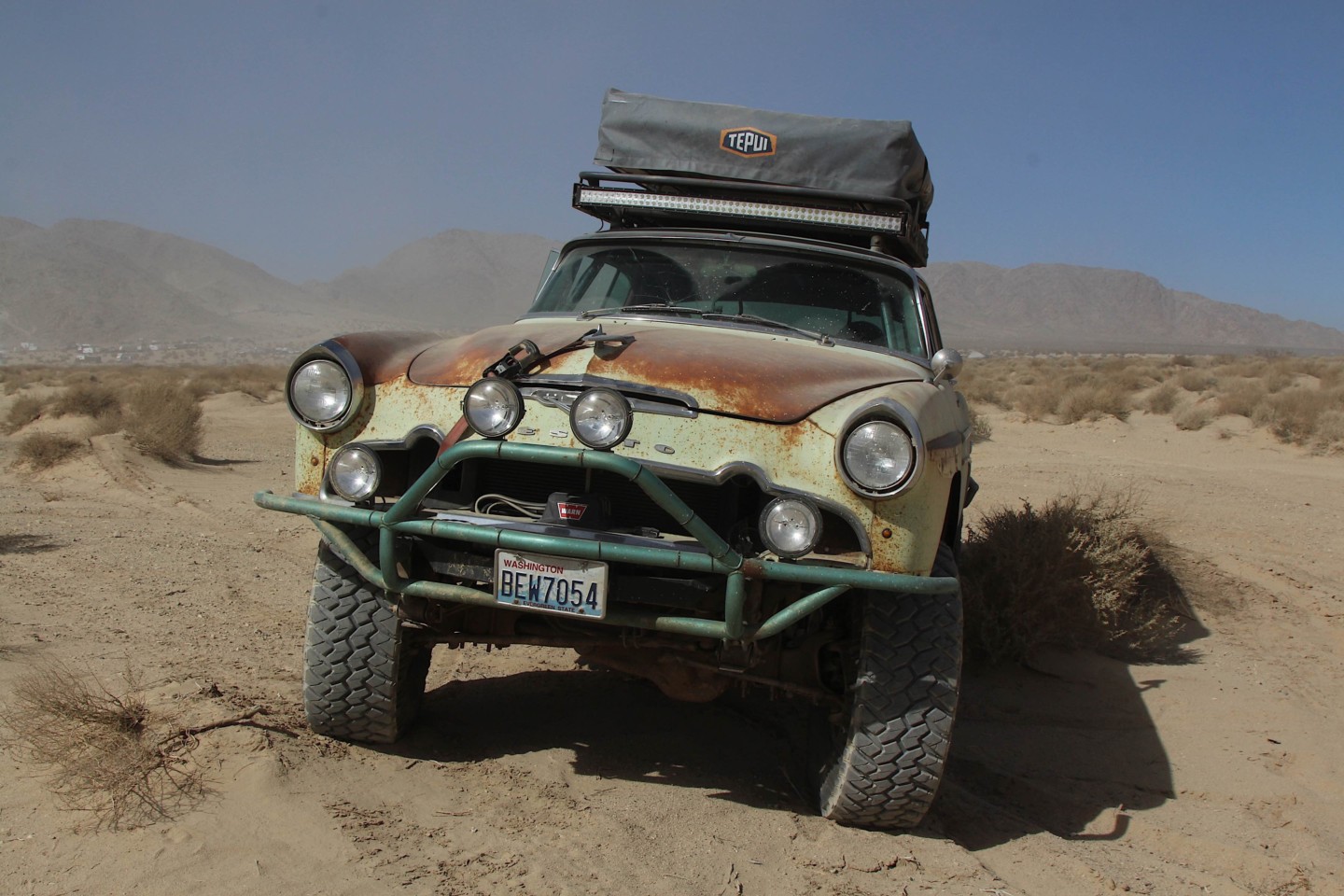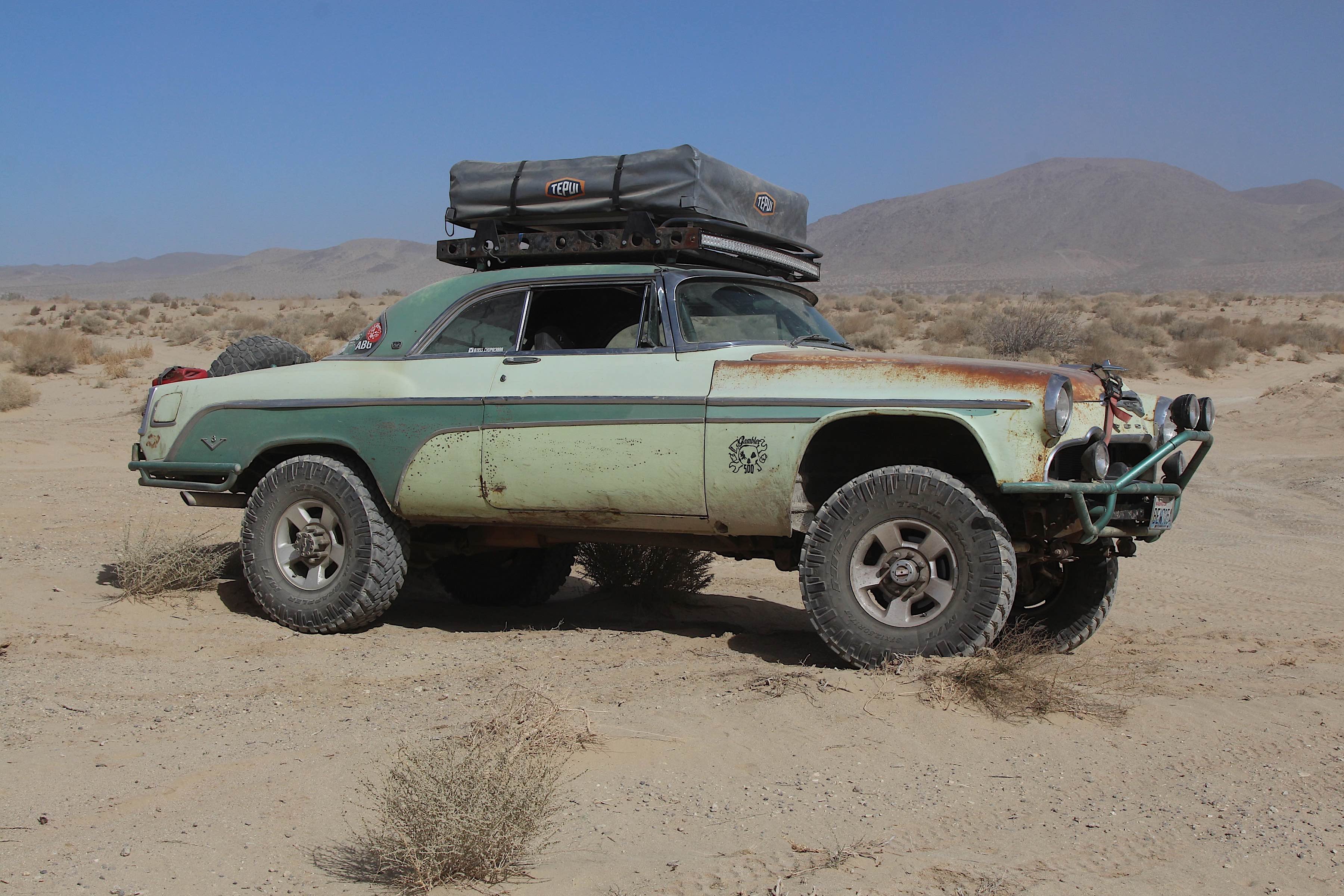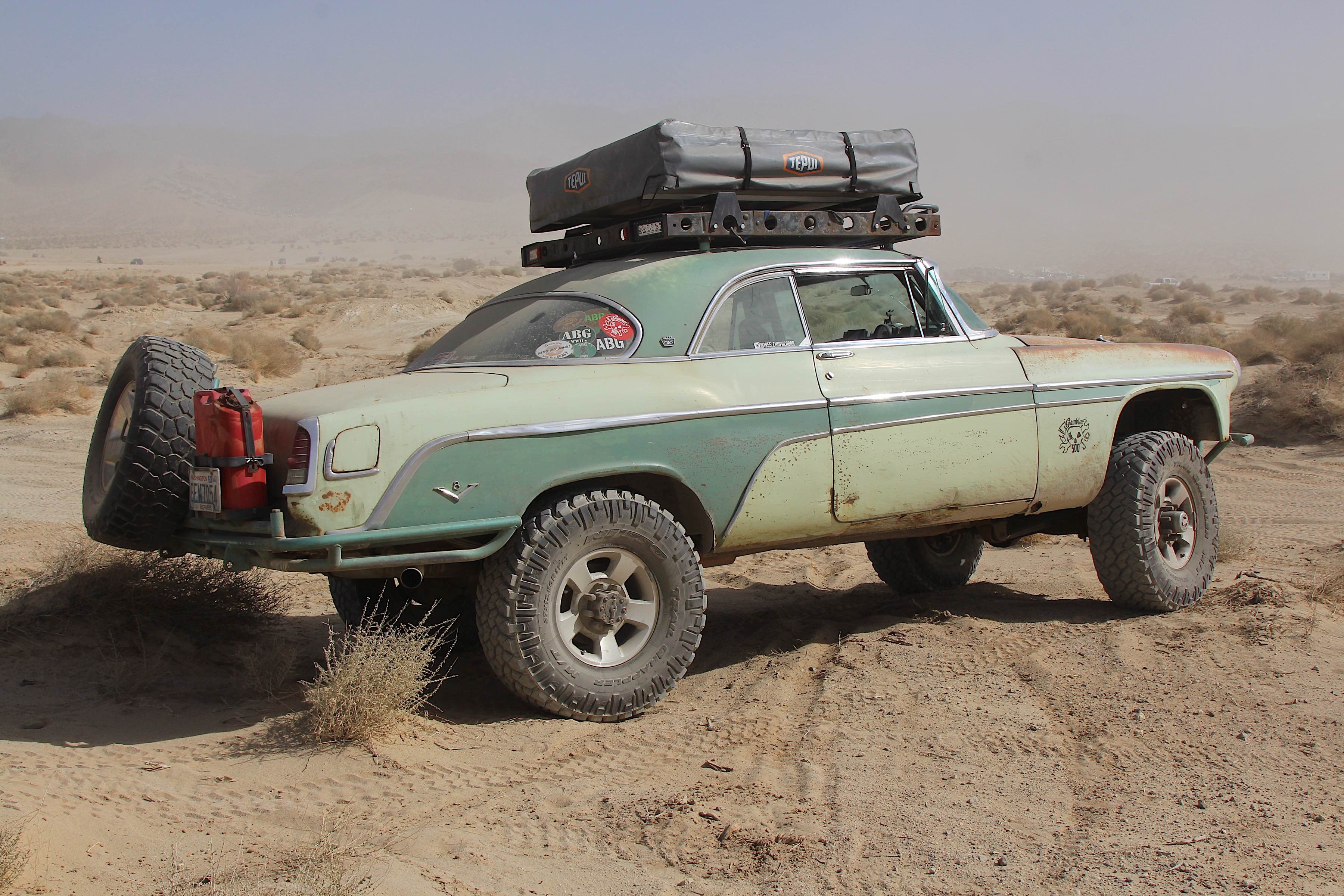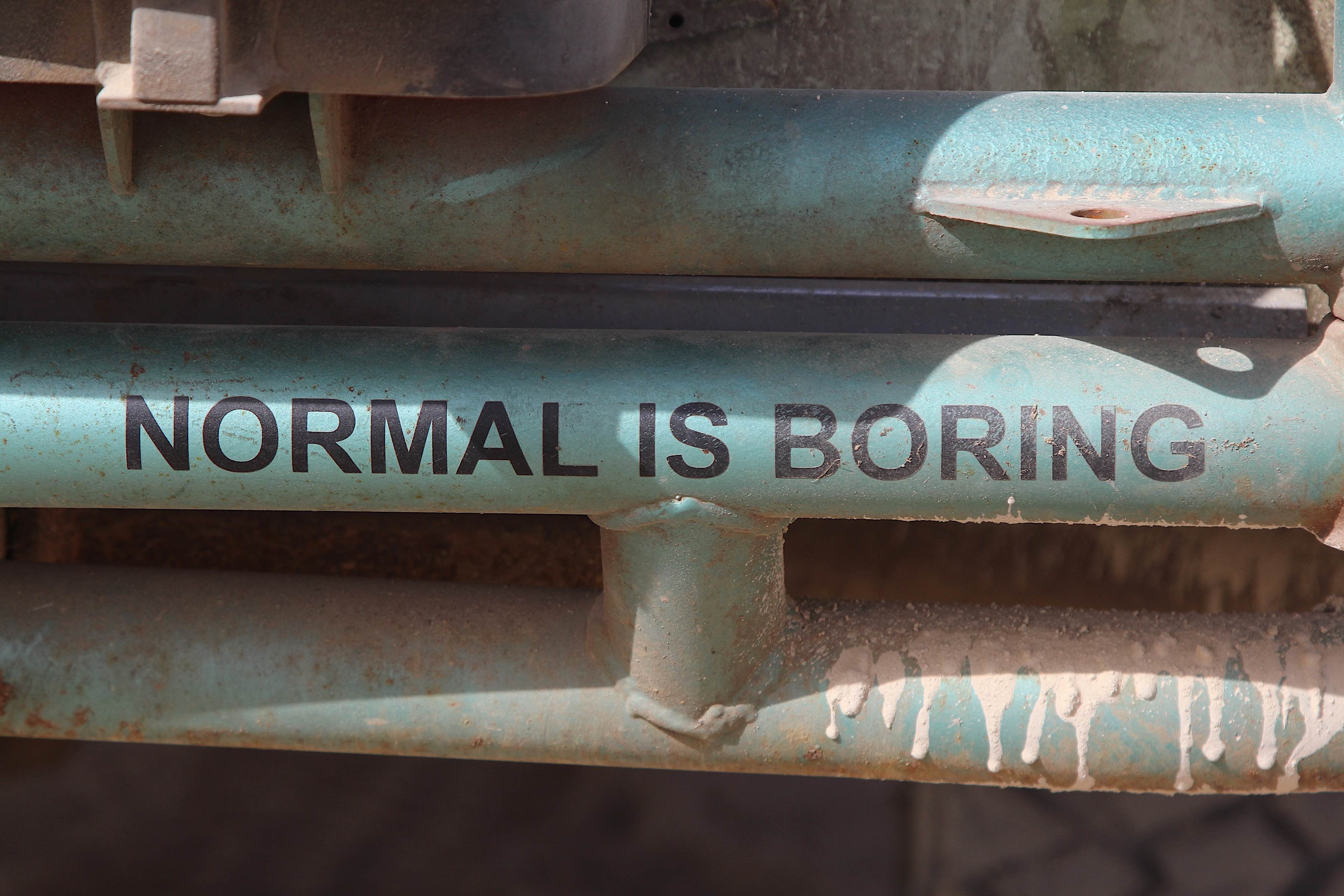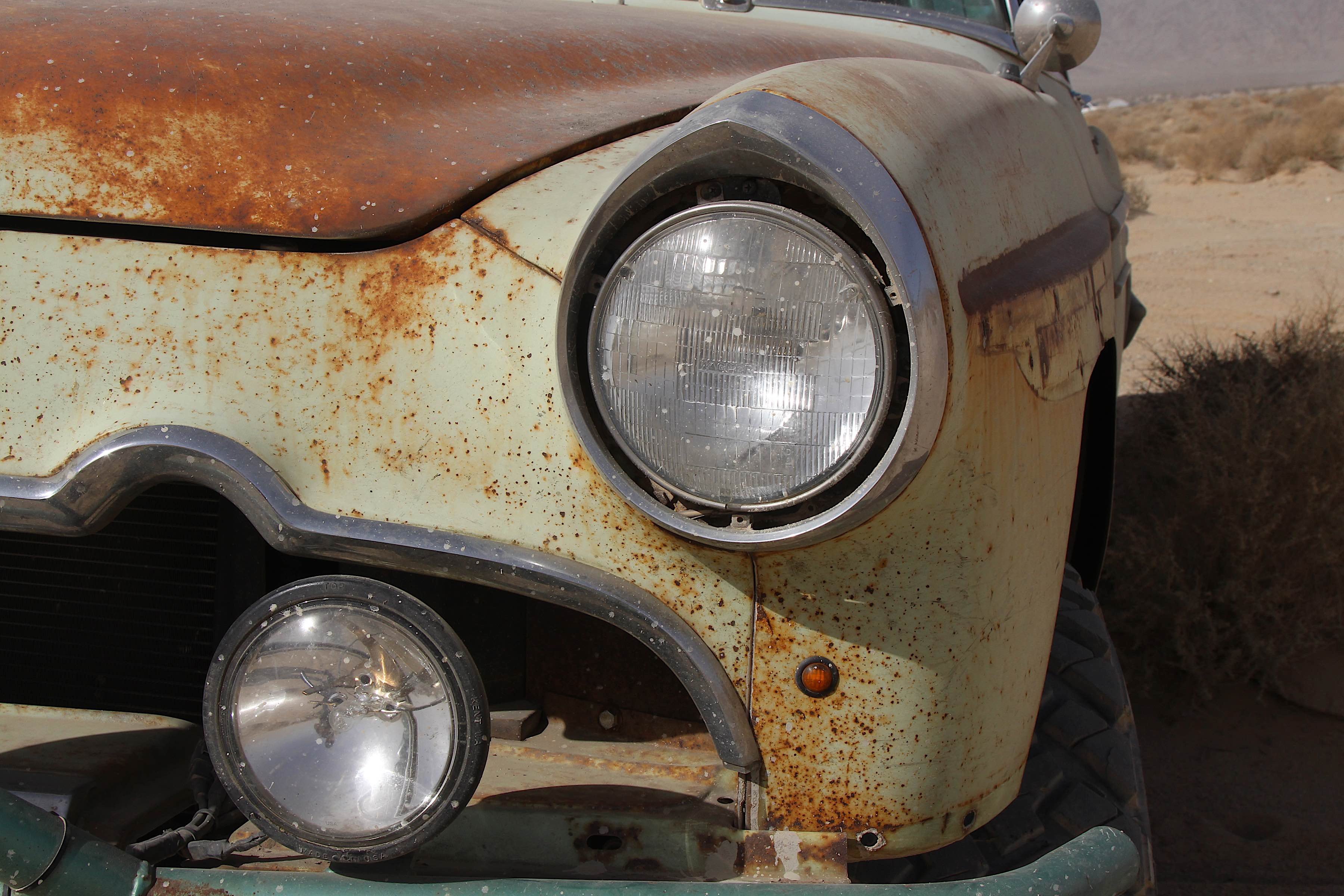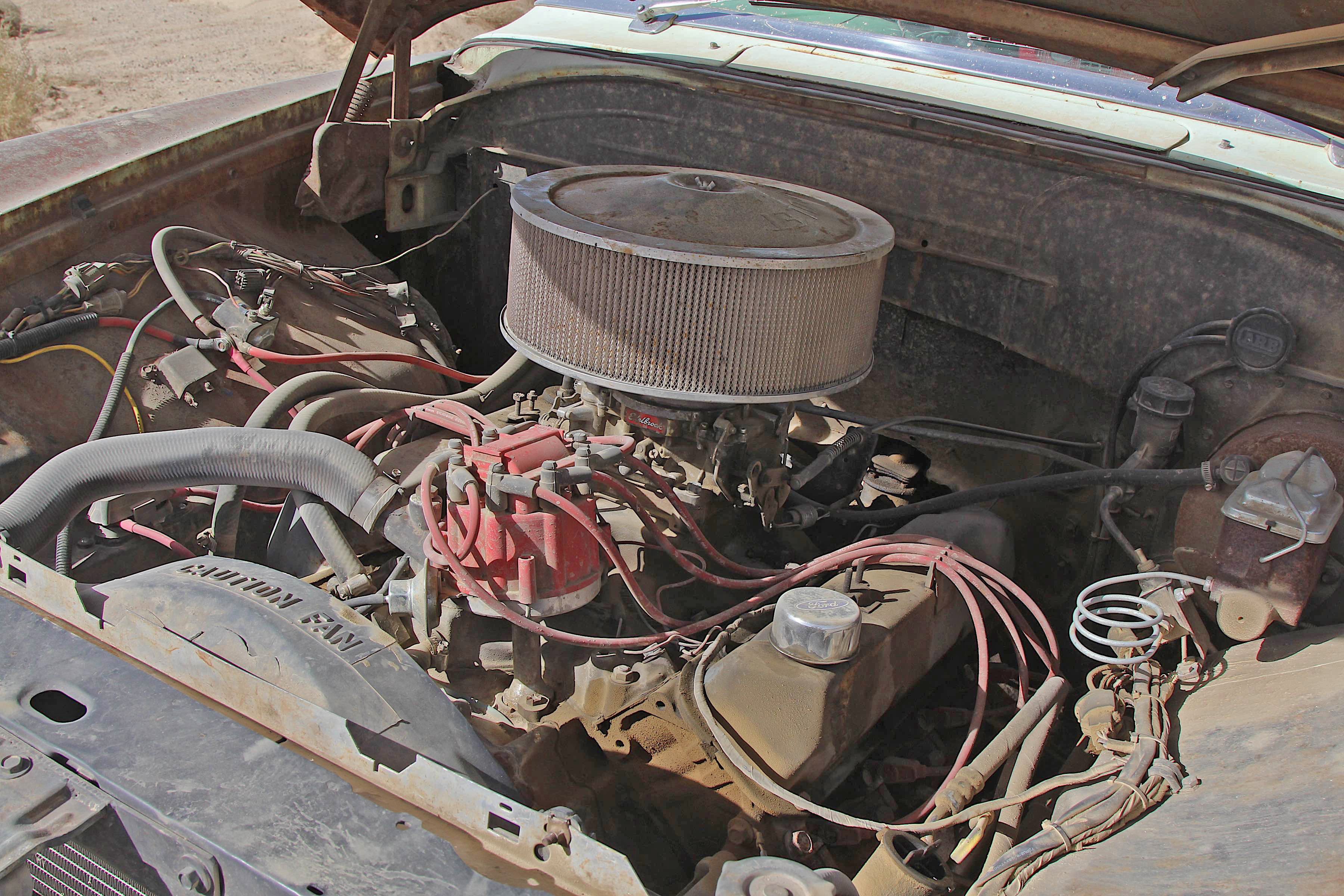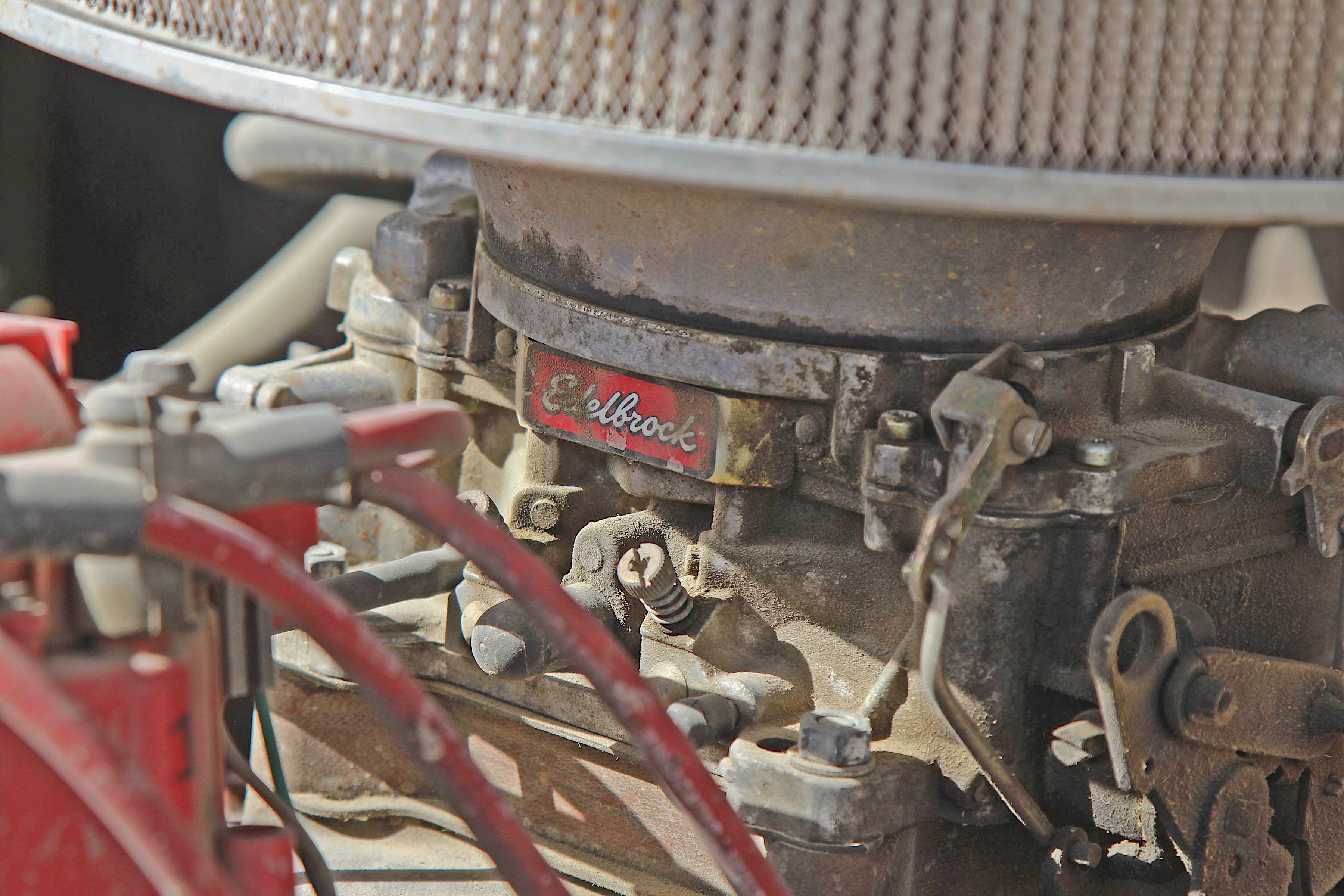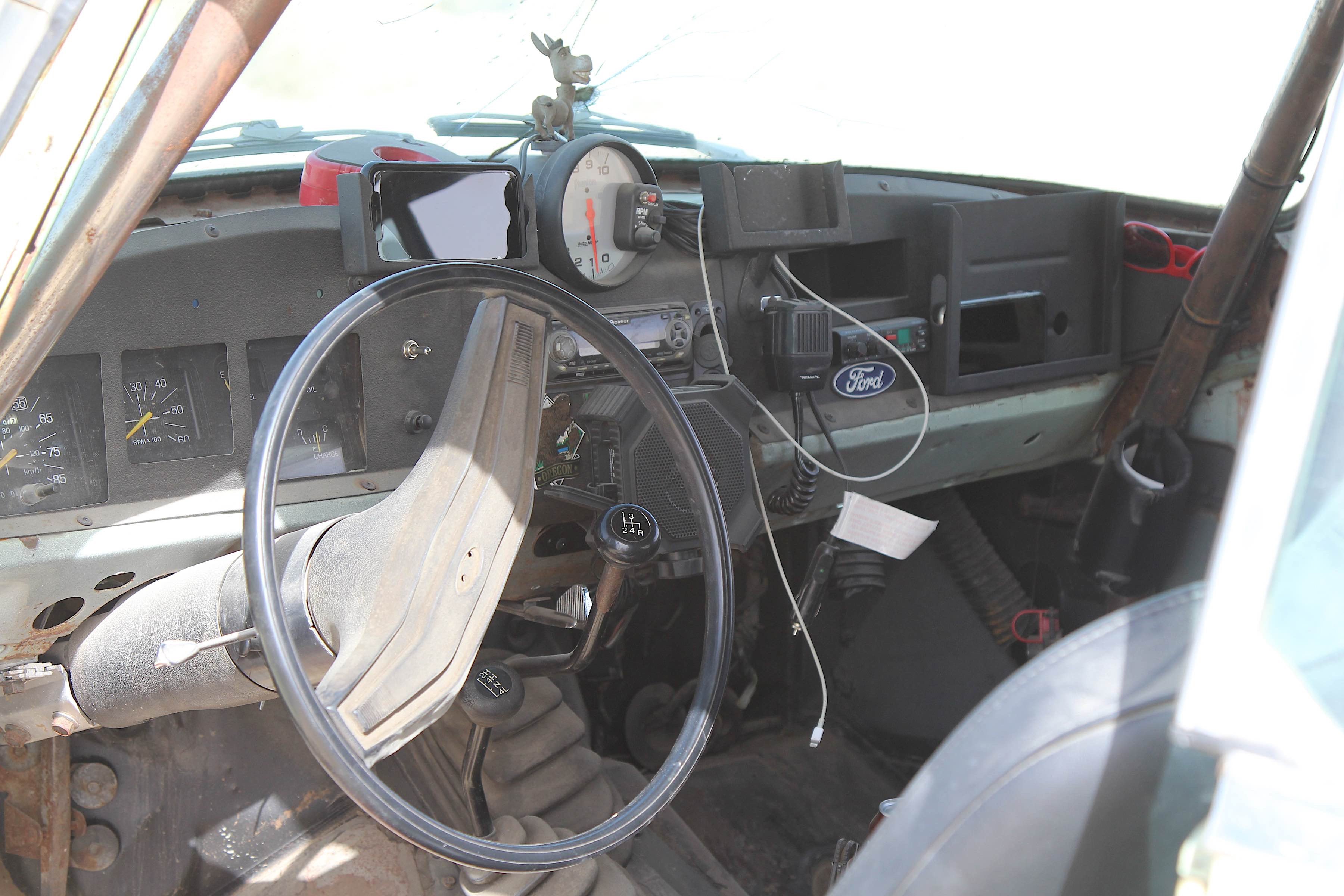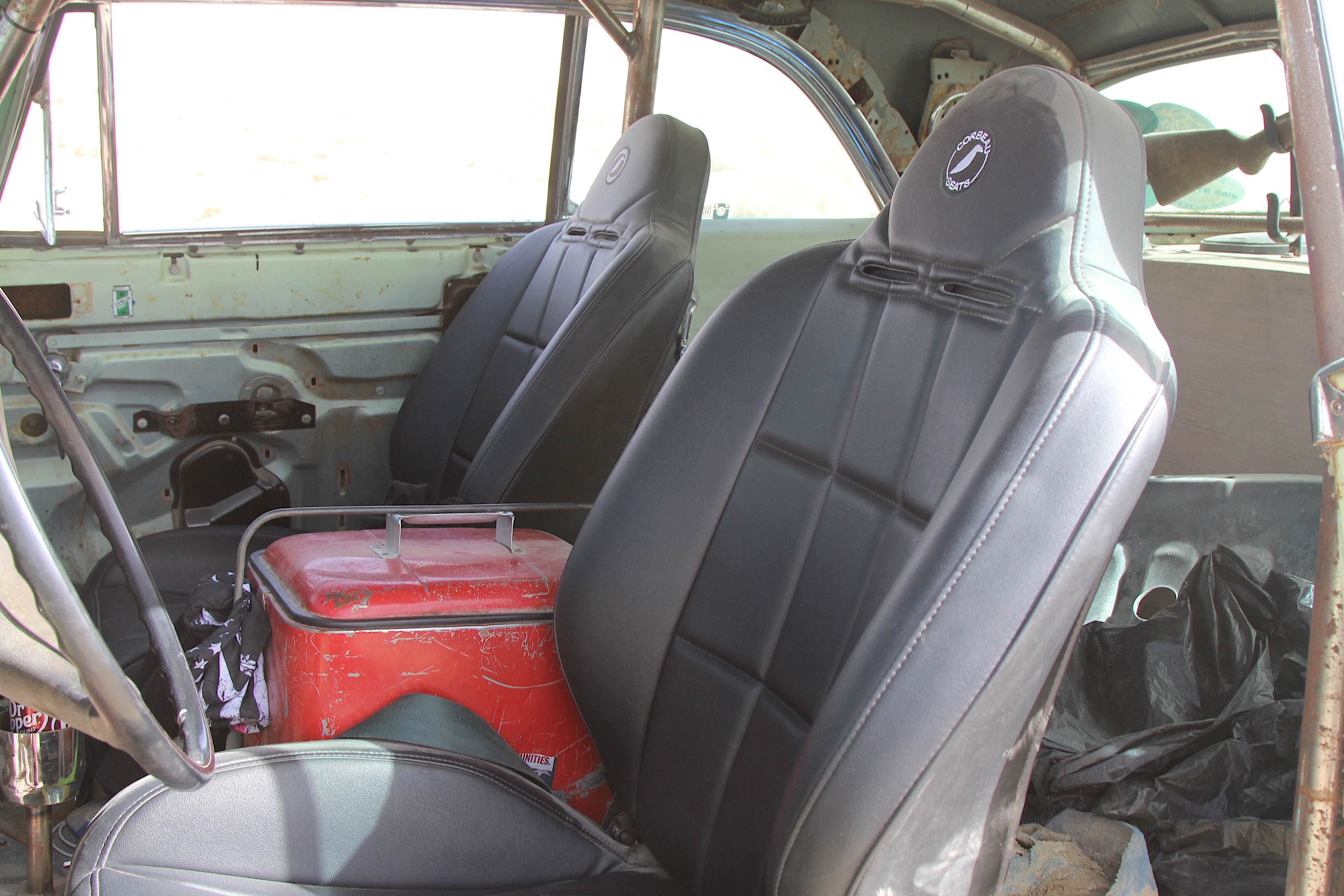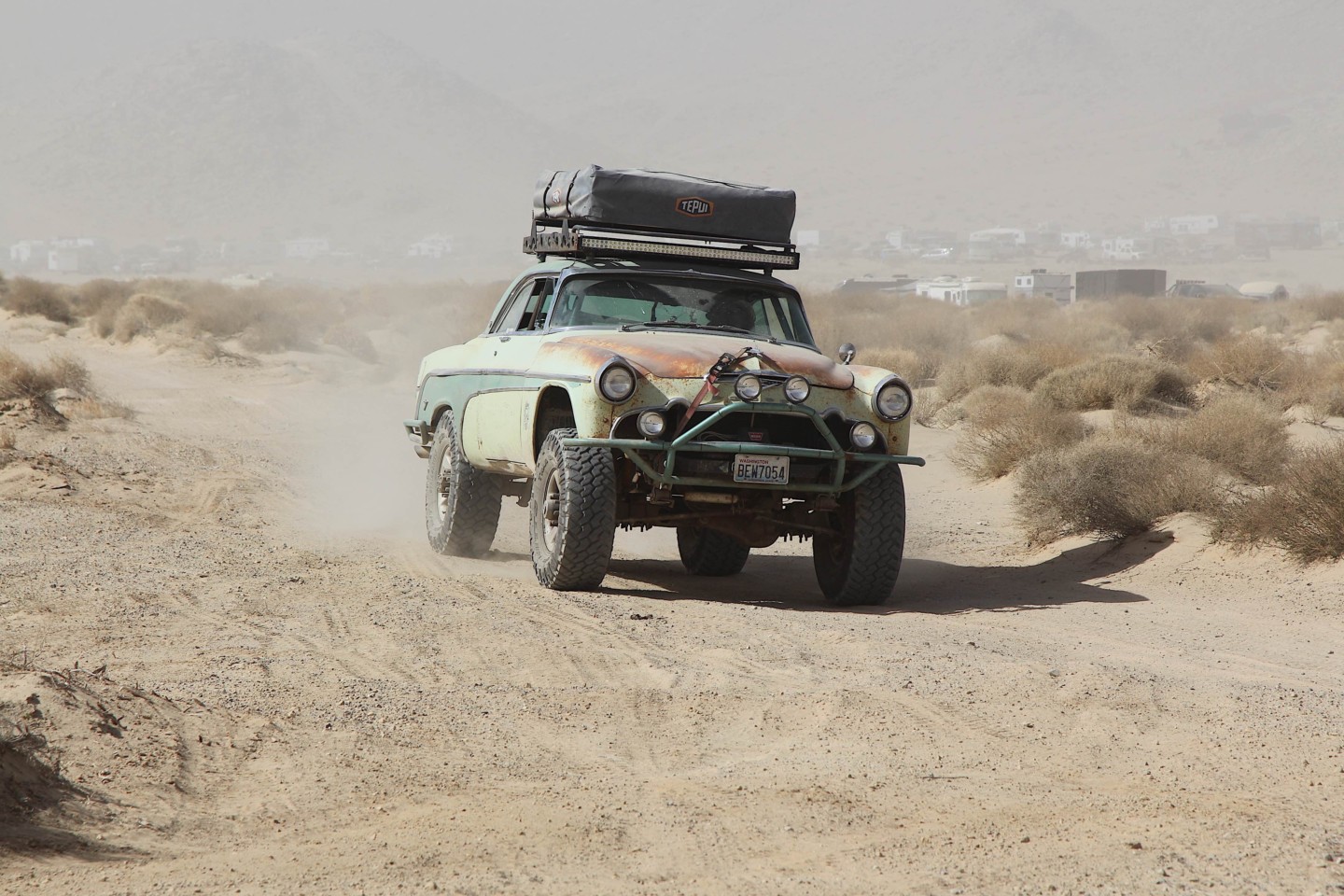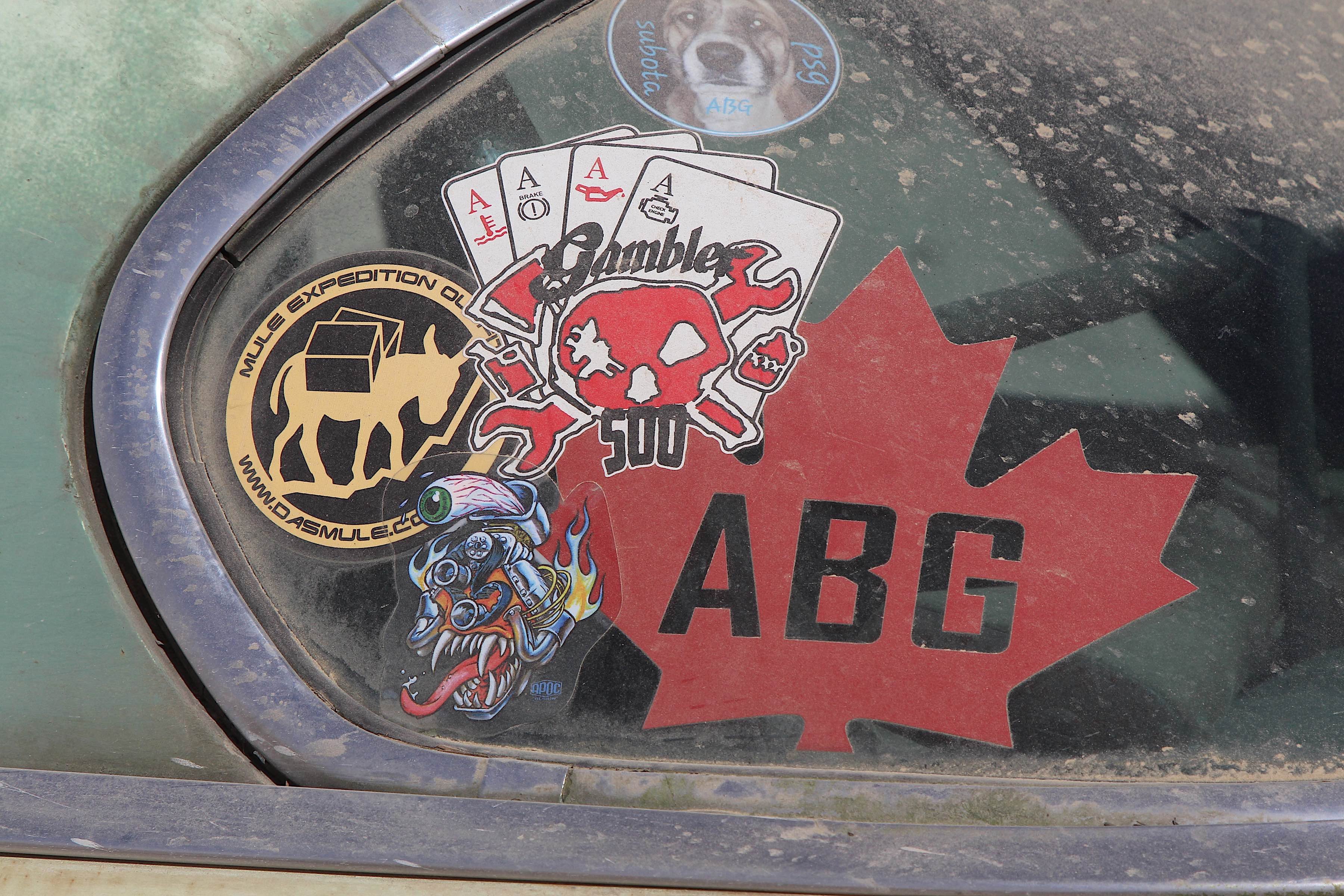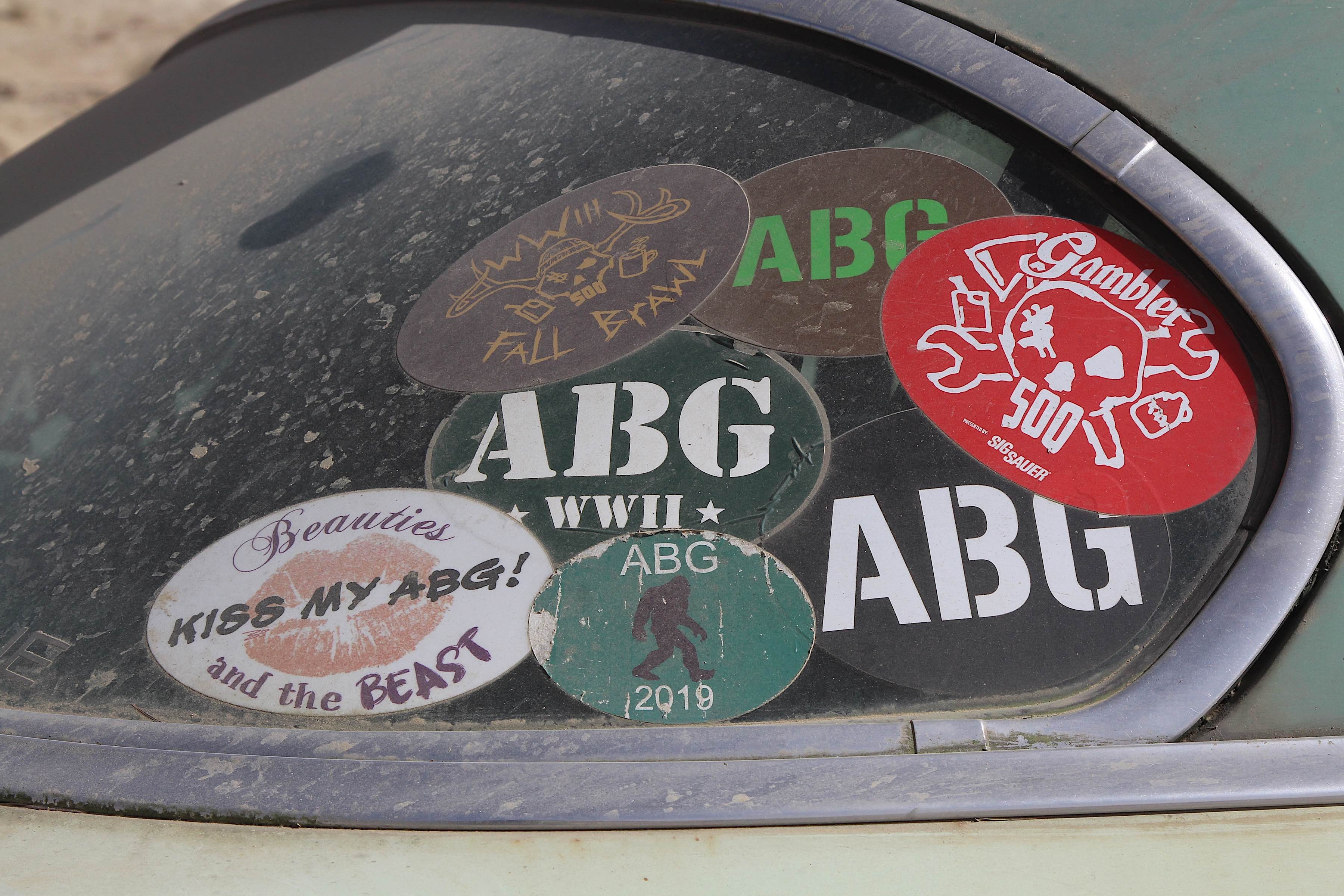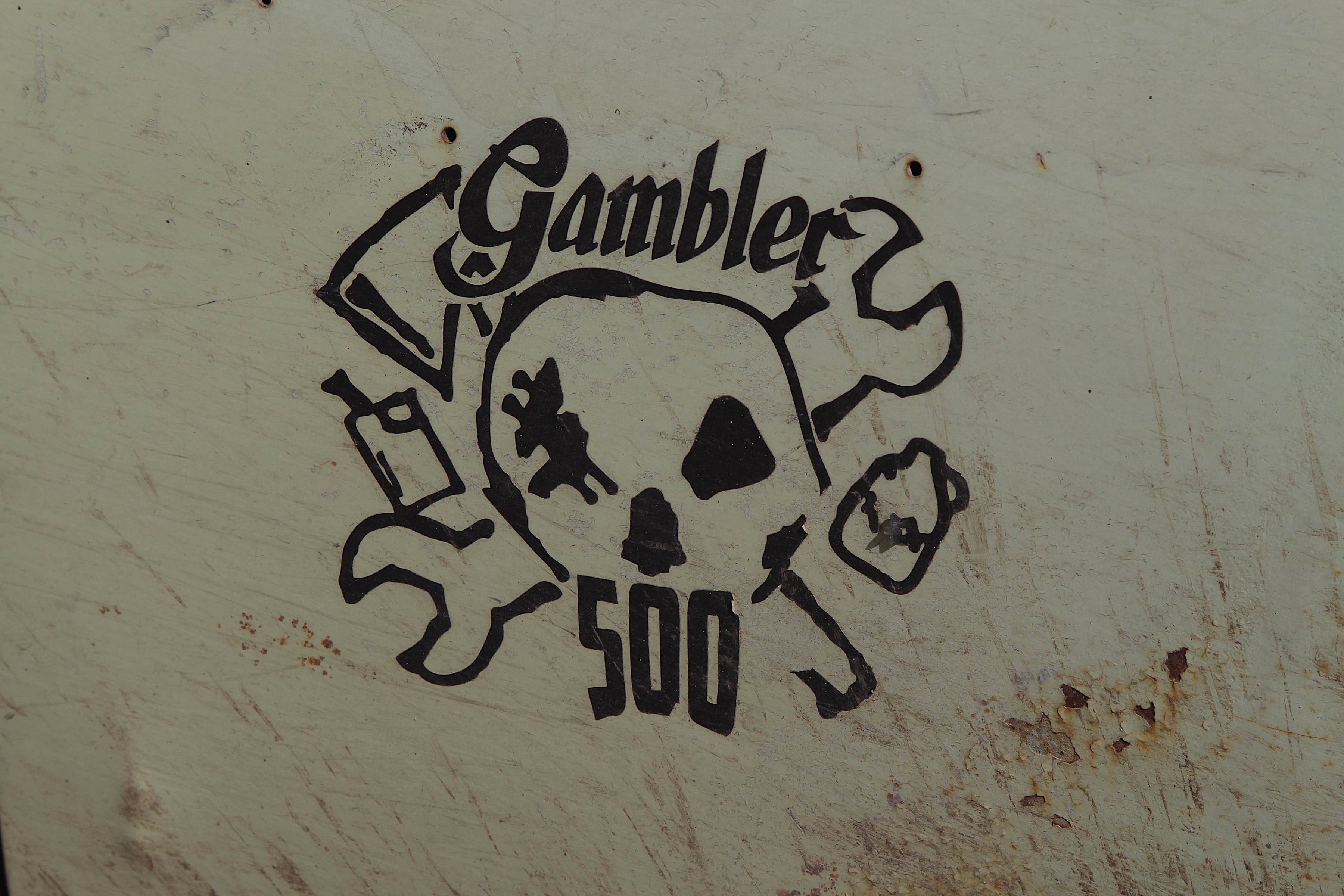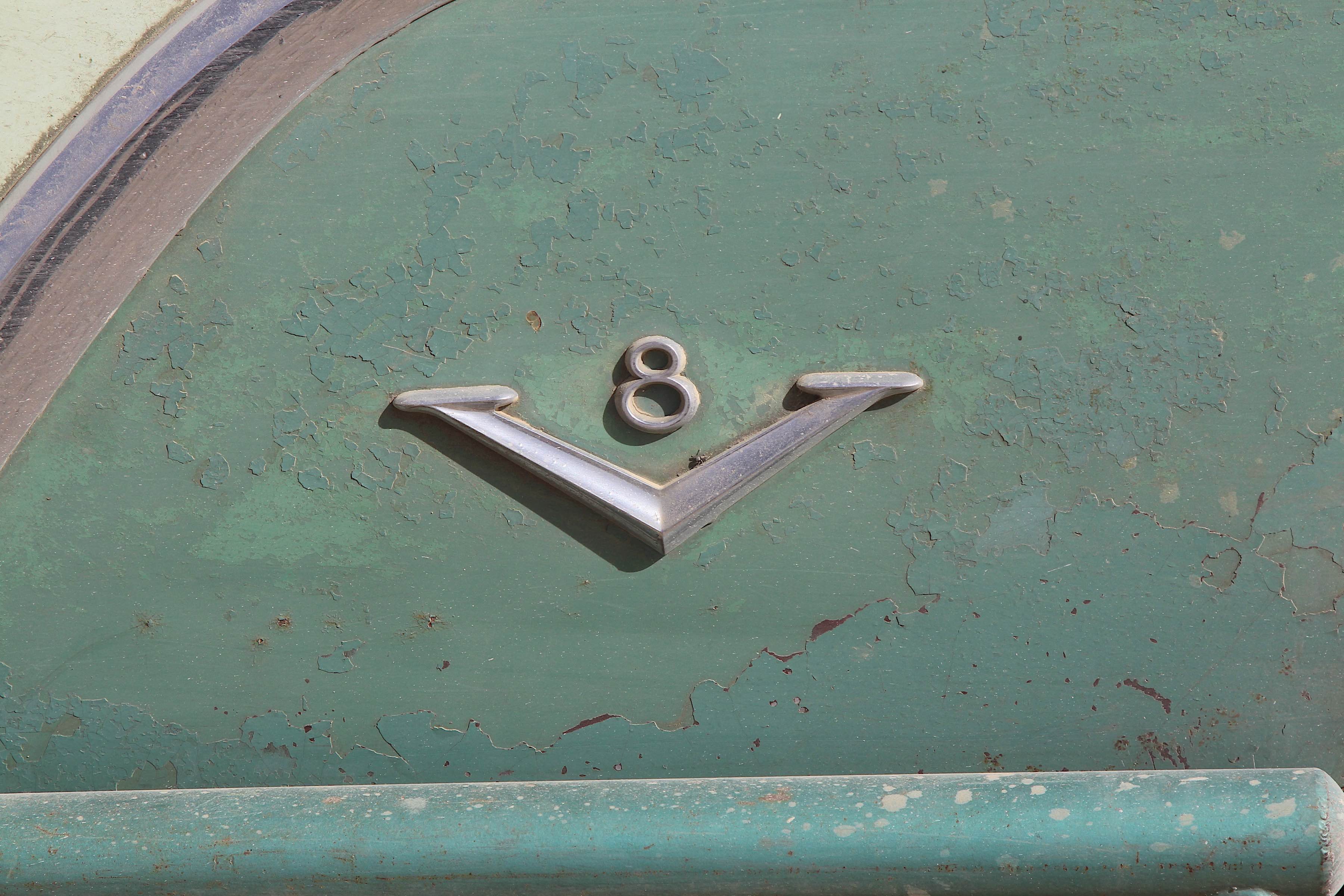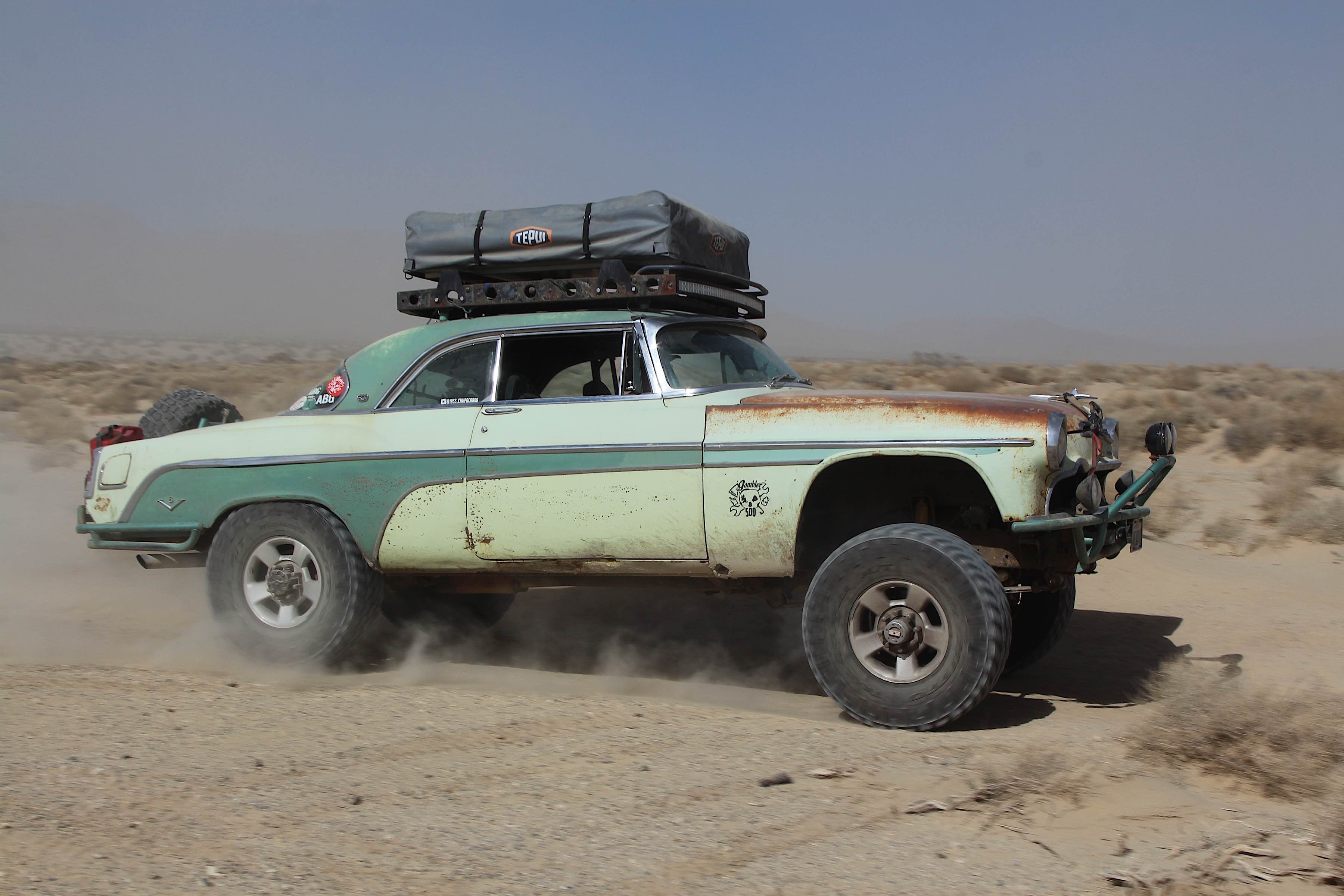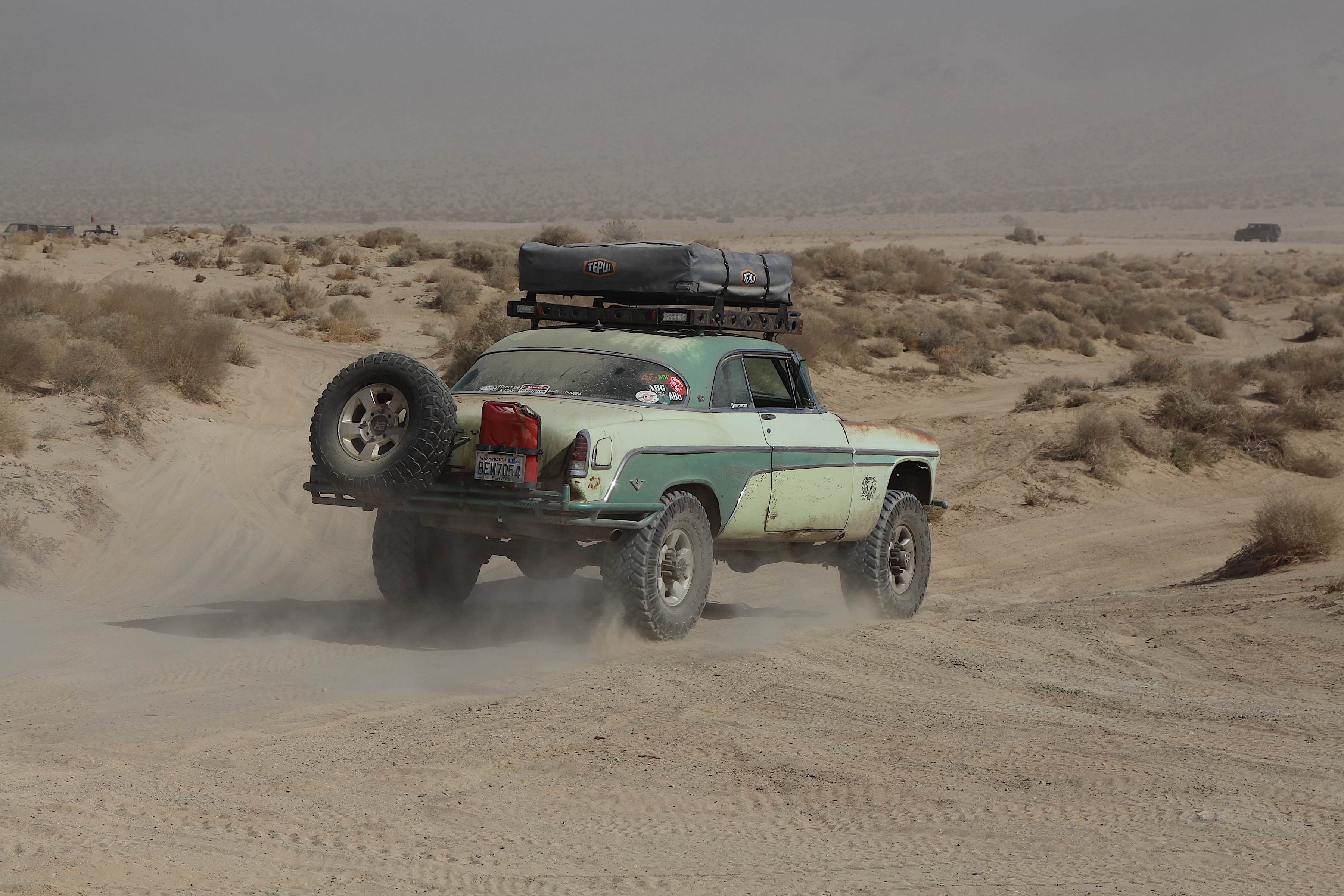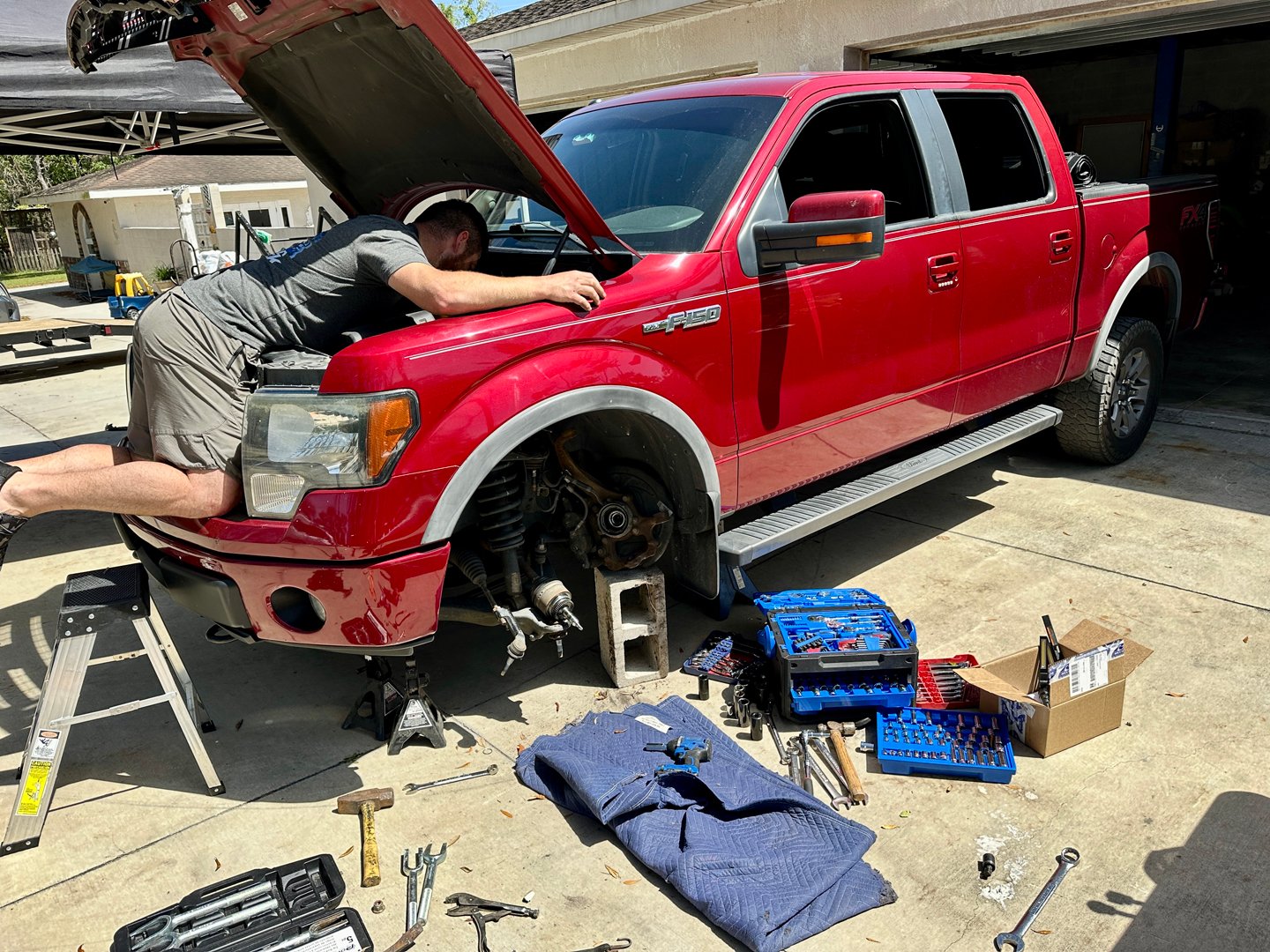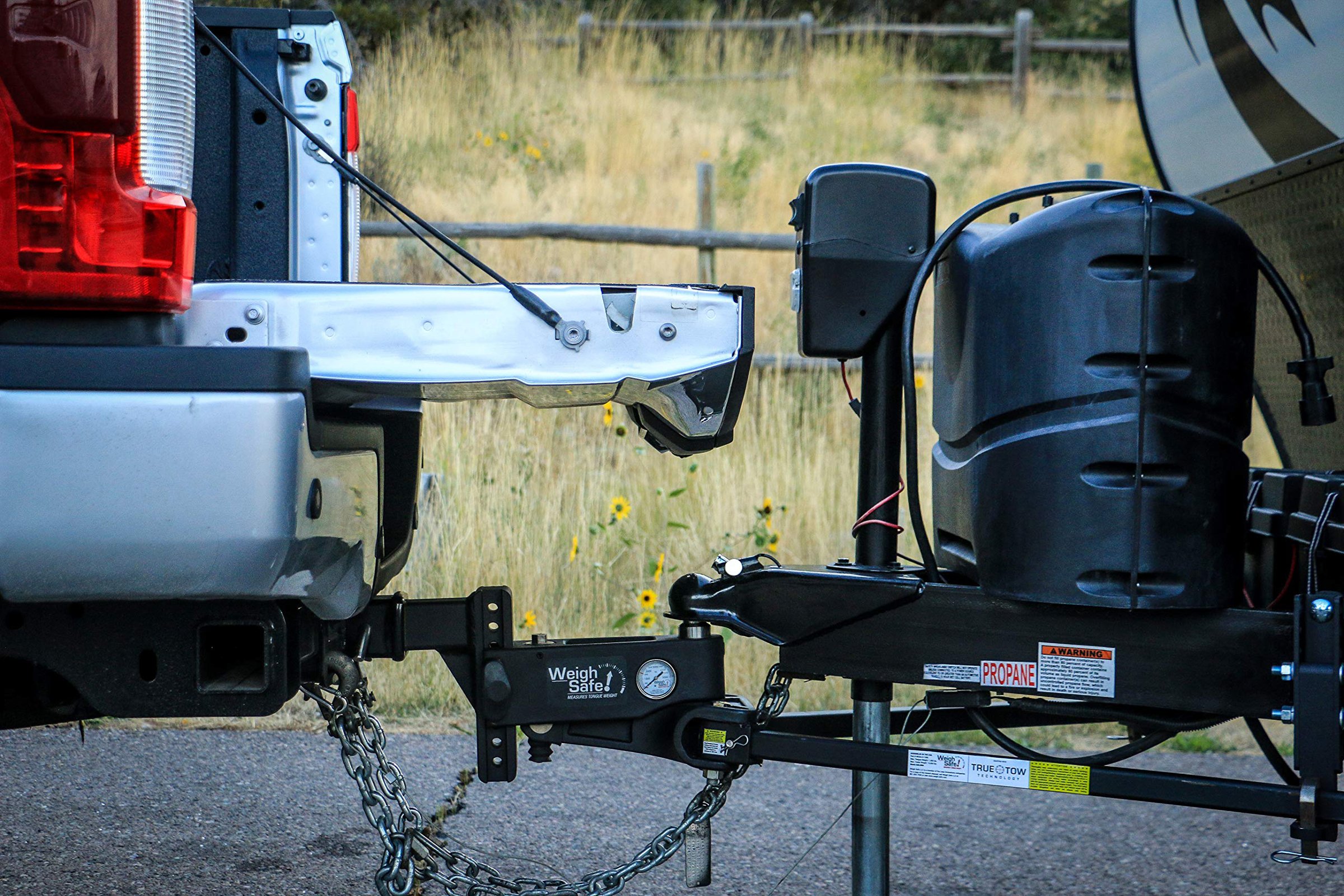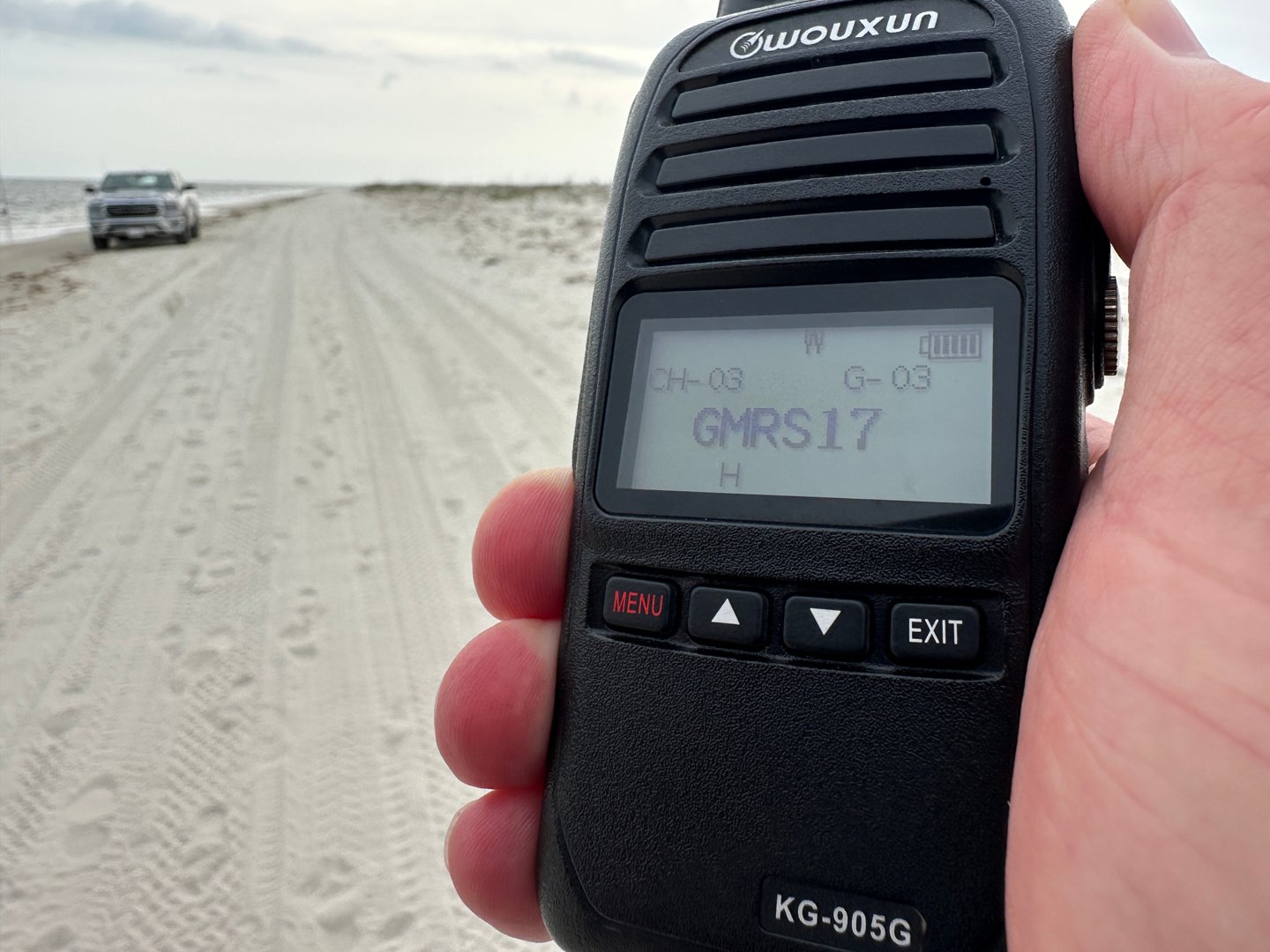2020 marked an important event in the history of the Ultra4 King of the Hammers. It was the first time that the Gambler 500 made a mark on the event, running a HooptieX on Saturday following King of the Motos. Thanks to this intriguing turn of events, it was practically assured that we’d see some unconventional and awe-inspiring builds during KOH Week. Dave Mackey and his 1958 DeSoto fulfilled that prediction, and then some.
I spotted Dave’s lifted coupe rambling around the lake bed on Saturday. Against the strong winds and clouds of dust floating around, he and a friend were defying nature with windows down and spirits high. I hailed Dave down as soon as I saw the distinctive teal bumper and faded exterior.
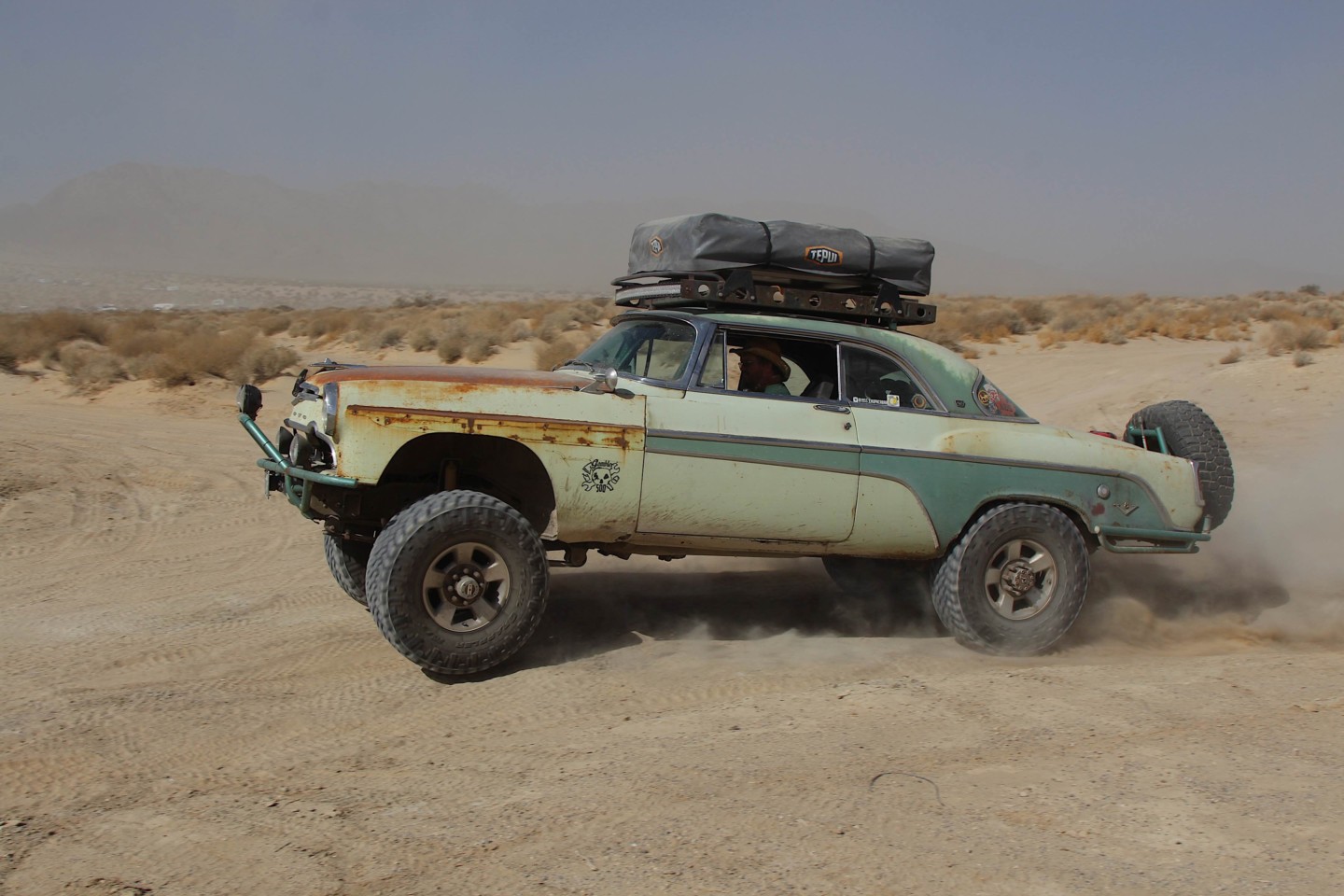
Dave embraced the Gambler 500 mantra of “always be gambling” in his 1955 DeSoto. King of the Hammers was one more terrific opportunity to get out there and use the car to have fun.
The car was unlike the countless Jeeps, trucks, and SUVs one sees at KOH. With its beefy tires, rusty patina, and ’50s aesthetic, it was an interesting combo that begged the question – how did this all start?
Background Of The Build
The story began with Dave first hearing about the Gambler 500 from his sister. The Gambler 500, if you didn’t know, is a rally “race” held in Oregon every year, involving hundreds of $500 (i.e. cheap and prone to breakdown) cars all driving to a destination and taking off-road routes as much as possible. We covered it for the first time last year, and it was a total blast.
Hearing about this event spurred Dave to try his hand making his own Gambler car. “I wanted to build something that was entirely my own,” he said. “At the time I was brainstorming a build, I had an employee that was building a rat rod project using the engine from this car. He didn’t want the body, so I bought it.”
The "Chupacabra" – Dave's nickname for his ride – has a dual nature. It's comprised of a 1955 DeSoto body on top of a 1986 Ford F-250 4WD chassis. Bulging out the fenders allowed him to run larger tires, seen here as 37-inch Nitto Trail Grapplers.
Dave started formulating more details about the vehicle. “I was debating if I wanted to have it be two-wheel-drive or four-wheel-drive,” he said. “I searched for a truck and found one that had suffered a carburetor fire at some point. It was dirt cheap, only $250, so I bought it. It was a 1986 F-250 with four-wheel-drive, which suited me just fine.”
Dave started the build in February 2017 and finished it in time for that year’ Gambler 500 in July. “All told, it was 32 days, just working on it on the weekends,” admitted Dave. “I think in total, I had about $2,500 into it when I first completed it, but it’s gone through a few more modifications since then.”
Crafting A Gambler Car
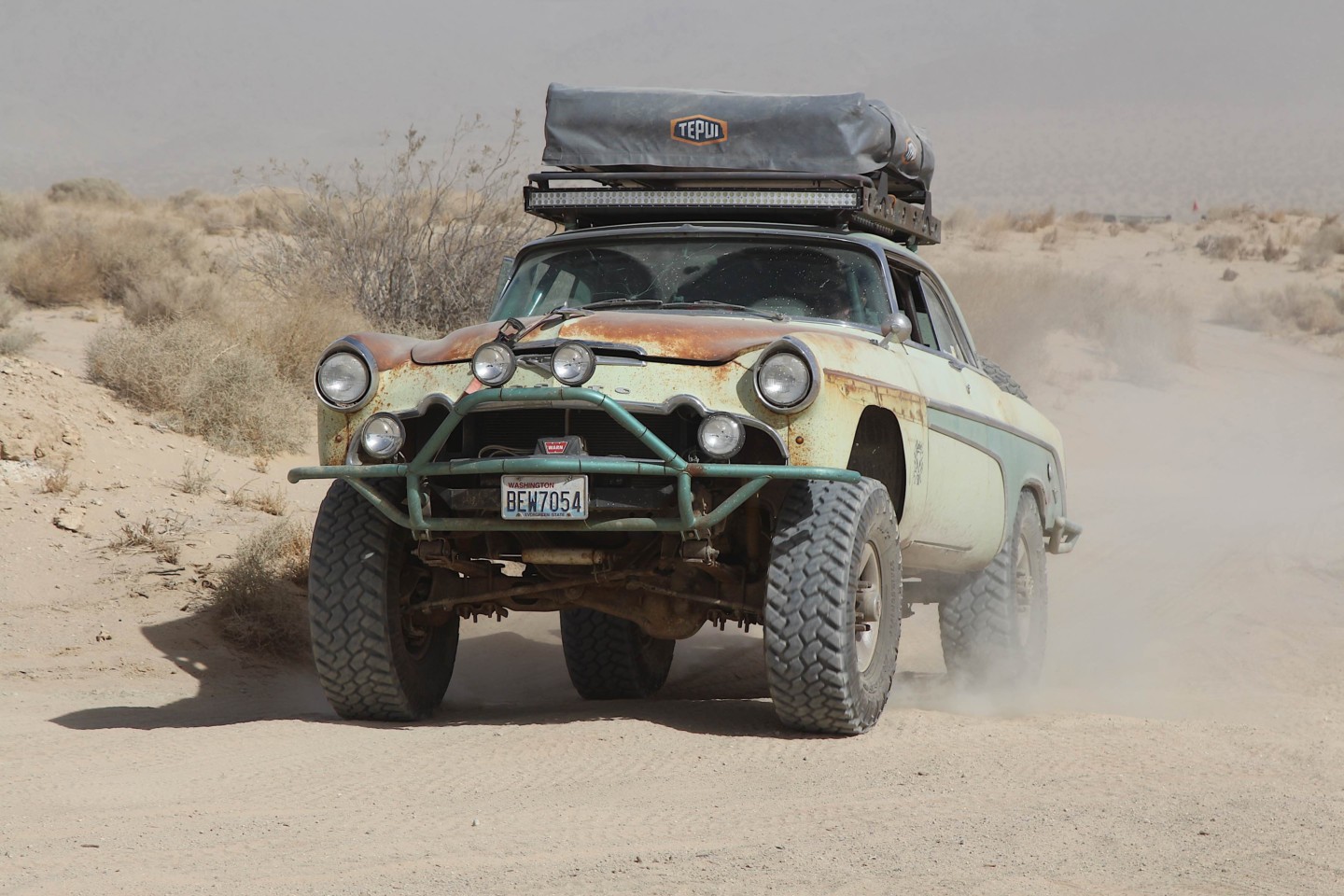
While some builders get giddy over how much they spent to spruce up a car, or how much blood, sweat and tears they invested, Dave was the complete opposite. “What you see is what you get,” he said. “I didn’t modify the chassis, and I didn’t lock the differentials.”
Getting a car body made in the 1950s to fit onto a truck chassis from the 1980s – if ever there was a Frankenstein project, this was it. “The truck was a longbed configuration, so I had to shorten it by about 30 inches,” said Dave. “Still, I kept all of the floor, firewall, and bed floor out of the truck. It has all of the original factory mounting fixtures to the frame. The rear wheel wells are factory. There’s a little bit of lowering on the front section, and the fenders on all corners are stretched out an inch and a half for tire clearance. I had to split them in the middle, fill them out, and then I put the trim back on them.”
It’s one thing to say you’re going to mate a dissimilar frame to a misfit body, but it’s a whole other thing to actually make it happen. “Basically, I had to find the centerline of both the body and the frame,” explained Dave. “The DeSoto was extremely rusty from sitting around for 25 years. So the floors were gone anyway, thankfully. But I did fabricate new inner rockers, and then mounted them to the floor.”
If there was something that couldn't be fabbed in Dave's garage, he spent as little as possible to acquire it. "Most of the stuff I put on the DeSoto is as cheap as cheap can be," he said. "If it cost money, I went to swap meets and junkyards to get it."
The paint was Krylon matched to the old color, and the bumpers were fabricated out of raw stock roll cage tubing. The roof rack, interestingly, was the ladder rack on the F-250. “I had it tie in directly with the roll cage through the roof,” commented Dave.
The cage ran out into the makeshift bumper, which was fitted with an 8,000-pound WARN winch. “I wanted it kind of hidden in the grille,” said Dave.
The Warn winch was tucked away where the grille would be. The headlight housings were originally aluminum and exclusive to DeSotos, so they likely got pillaged years ago. In their place, Dave installed ones from a classic AMC Rambler, or so he thinks.
The engine was a Ford big-block 460 cubic-inch V8. Dave spruced it up with a 550 cfm Edelbrock carburetor. He commented, "If I had the original motor that came with this car, it would be worth quite a lot of money. DeSotos came with exclusive Hemi V8s back in the day and they're highly valued these days."
Out back, a custom-made tire carrier held up the spare tire. Dave originally had the spare resting on the roof rack, but after buying the tent, the tire had to move. “I started on the lower portion of the bumper and went up from there,” said Dave. “It lets me use the trunk, and if I fold down the rear seat, I can fit a whole plank of plywood in there!”
The DeSoto ran off of a big-block 460 cubic-inch V8 from a donor vehicle, and was mated to a ZF five-speed transmission from another donor vehicle. “For the record, those two don’t bolt up,” joked Dave. “I had to make them work together with an adapter.” He did manage to keep the axles and driveshafts from the F-250, those being a Sterling 10.5-inch rear axle and a Dana 50 TTB front axle.
The interior featured a custom-built dashboard and other odds and ends. "I made my own cupholder for me and my wife," commented Dave. "My side fits my favorite soda, a Dr. Pepper, and hers is big enough for the Red Bulls she loves."
Inside, the DeSoto revealed some of the quirks of its owner. Custom-made phone mounts, a Shrek figurine of Donkey, a gun rack in the rear with a single-barrel shotgun and vintage Sharps carbine; you know, the usual stuff you find in a 1950s car.
Make It Your Own
Dave’s DeSoto summed up what makes project builds so interesting. It’s about taking something and giving it a new spin, all while keeping the wallet thick and the credit card tucked away. Not everything needs an all-out, no-expense-spared restoration, and that includes a rusted-out DeSoto body.
“My favorite aspect of this car is how cheap I managed to stay on it,” said Dave. “It’s low-buck. Plus, it teaches people that they can build stuff in their garage with a little bit of knowledge. It proves you don’t need tons of money to build something and have fun.”
Dave has plans to take the car to more places once things return to normal. “I’m interested in going to Moab, maybe checking out the Rubicon,” he said. “I’ve got an ARB air locker for the back I need to install, and I might lock the front. Re-gearing would be a good idea, since it’s 3.73:1 right now, and I want to take it out on trails. This thing could probably benefit from an NP205 transfer case, too.”
Dave took a gamble on this DeSoto, but it’s paying off now. He has an Instagram page devoted to the car, where he showcases its travels and tribulations. Give it a follow to see what it’s up to, and stay tuned for more great ORX content!
